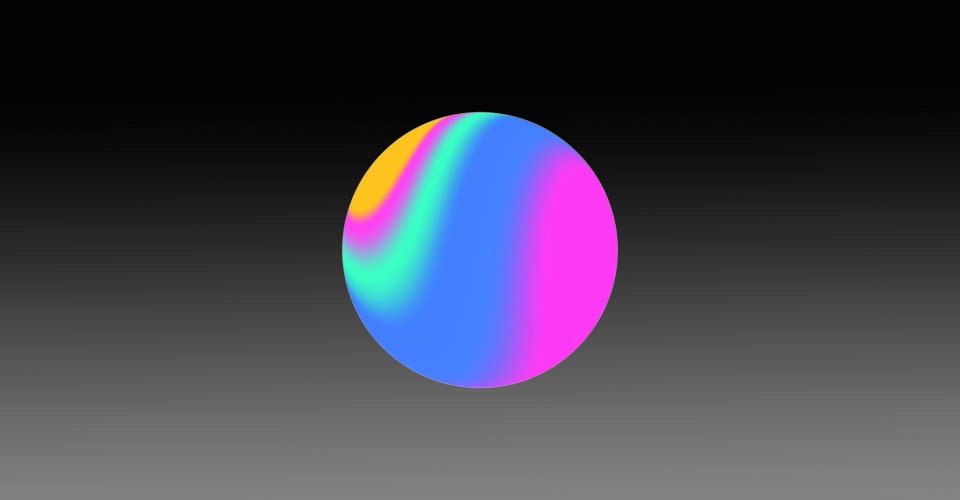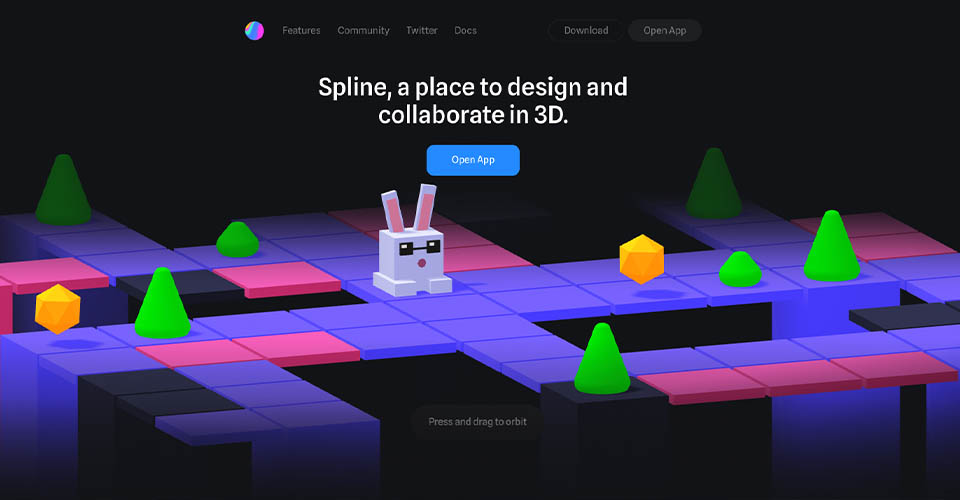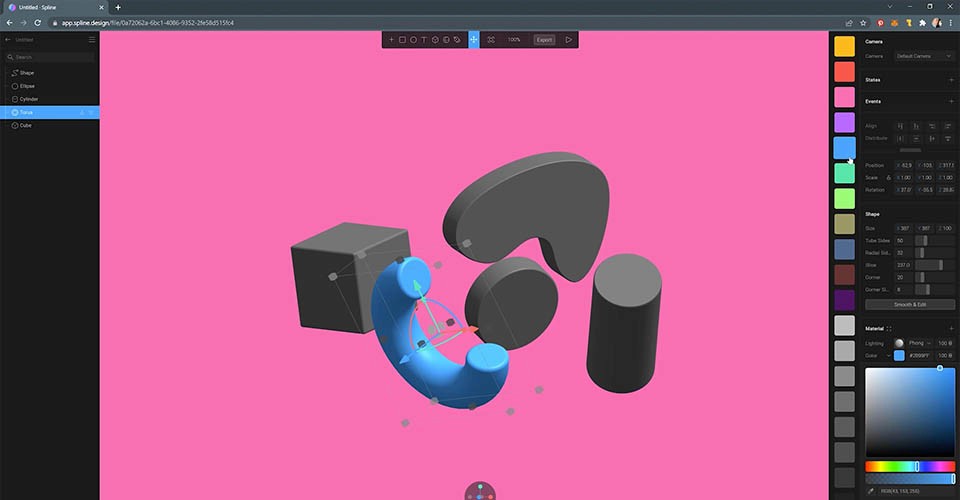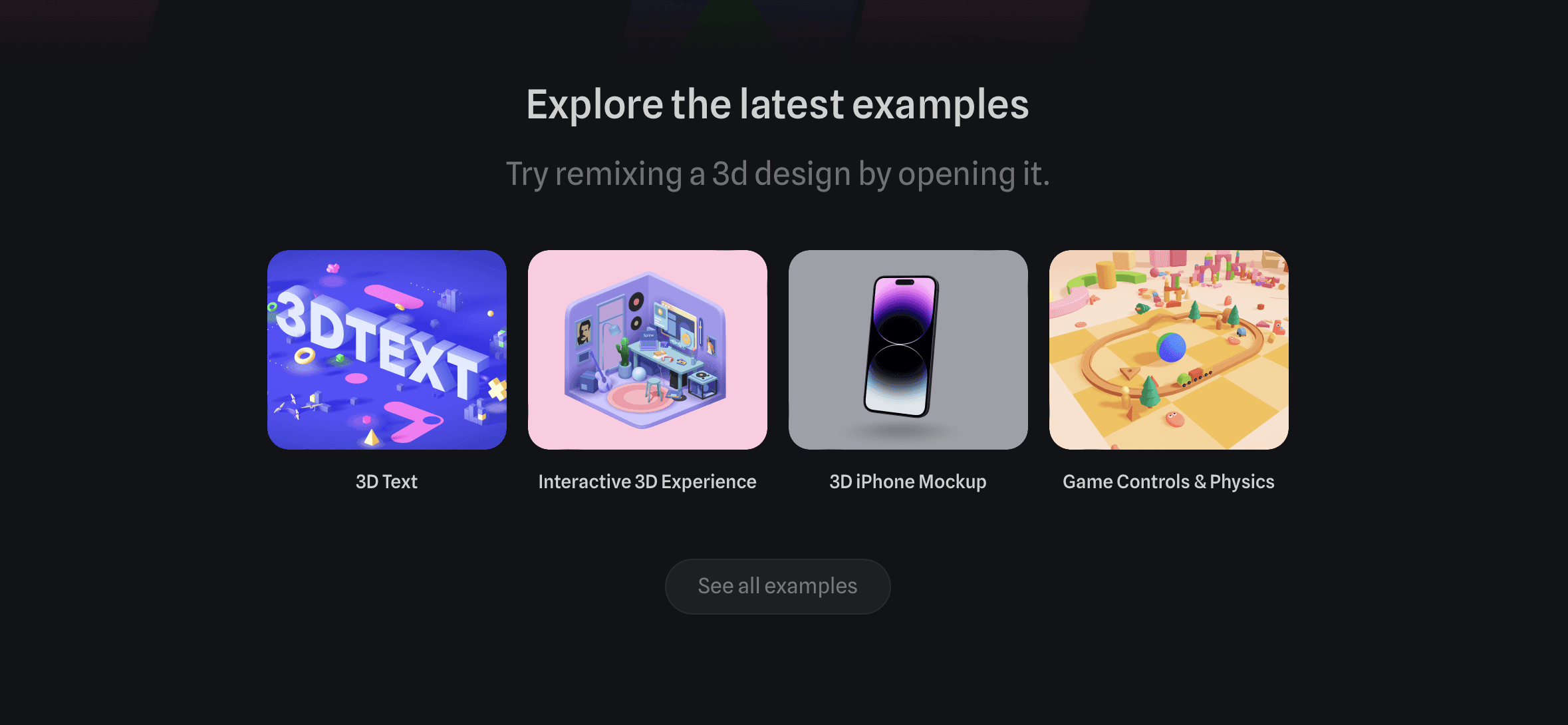I'm not really into 3D design. As a Product Designer, I mainly use Figma for UI and UX and, sometimes, I need a bit of 3D flair in my designs. While my 3D skills are basic, I've tried out Spline, a user-friendly alternative to traditional tools like Blender.
Until recently, creating objects and shapes similar to those shown in this image was a big challenge for me. For a 3D expert, it might have been easy, but my skills are in a different area. 3D design was unknown territory for me, and I never quite found the time to explore its features. Traditionally, software like Blender was the go-to for such work. But now, Spline has entered the scene—shaking up 3D design and emerging as a noteworthy alternative.
In this article, we'll dive into the interesting 'how' and 'why' behind this shift.

Spline: Capturing Figma's Vibe
The 3D modeling and design markets are dominated by established tools for professionals, making it tough to introduce something new. Why create yet another 3D tool with existing features? It doesn't make sense.
This is where Spline stands out. It takes cues from Figma, the leader in app and website design. Spline aims to be the "Figma of 3D," providing Figma's familiar user experience, now applied to 3D design. When I realized this last year, I couldn't resist. I jumped into Spline, using it to add simplified and imaginative 3D objects to my creative toolkit.
Spline, much like Figma, goes beyond being a mere design tool—it's a platform that fosters collaboration. Just as Figma revolutionized collaborative design in the 2D space, Spline extends this ethos into the realm of 3D design. Designers using Spline can seamlessly work together, share ideas, and iterate on projects in real-time, enhancing the collaborative design process. This collaborative aspect sets Spline apart, making it not just a tool for individual creativity but a shared space for design innovation and teamwork, mirroring the collaborative spirit that has made Figma a cornerstone in the design community.

Spline: Simple and Easy UI
Spline is remarkably straightforward, even when crafting complex 3D objects with extrusions, materials, and more. It's a tool that embodies simplicity, with a minimal learning curve.
Spline's onboarding process is flawless. The user interface (UI) is intuitive and, as mentioned earlier, bears a striking resemblance to Figma's interface. Given Figma's status as one of the most widely-used design tools globally, this similarity is a winning combination.
Now, it's essential to understand that Spline isn't in the same league as professional-grade tools, and that's perfectly fine. Instead, it carves its niche in the market—an expansive niche comprised of designers from various fields who wish to incorporate 3D elements into their creations.

Spline: an Innovative Approach to 3D Creation
As a Product Designer, I predominantly operate within the UI and UX domain using Figma, an area in which I excel. Nonetheless, the need occasionally arises to incorporate 3D elements into my work. Even though my knowledge of 3D software is modest, I understand its importance in enhancing aesthetics and communication.
Traditionally, crafting intricate 3D objects like those depicted in the image was an intimidating challenge. While experts in the 3D field may find it effortless, it was a daunting prospect for someone like me. 3D design remained a largely uncharted territory, and I had yet to explore its features. Established software such as Blender typically held sway in this arena, but Spline, the emerging contender, has disrupted the status quo. It is now a prominent and fashionable alternative, reshaping the world of 3D design.

Spline aims to bring the essence of Figma to the world of 3D design, providing a user-friendly experience. Realizing the potential of Spline, I ventured into it, filling a void in my creative toolkit by incorporating simple and imaginative 3D elements.
Moreover, Spline's simplicity extends to its user interface (UI), which is intuitive and bears a resemblance to Figma's interface. This familiarity is an asset, considering Figma's widespread use in the design world. While Spline may not compete with professional-grade 3D tools, it caters to a diverse group of designers looking to infuse their work with 3D elements.
Spline's influence in the 3D design market is undeniable. It caters to a broad audience seeking accessible and creative 3D solutions, redefining the landscape of design. As more designers explore the possibilities of this intriguing tool, Spline is poised to shape the industry, offering a simpler and more intuitive approach to 3D design, a transformation that holds promise for the creative community.

























